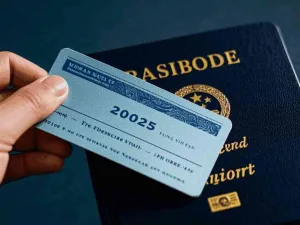Introduction: Unlocking China Without Visa Hassles
In 2025, China further relaxes its visa-free transit policy, offering more flexible options for international travelers. For U.S. and European travelers, this means that they can stay in China for up to 10 days without an additional visa, exploring a diverse range of landscapes from bustling cities to natural wonders. In this article, we'll explain the details of the policy, eligibility requirements and travel advice to help you plan a seamless cross-country trip.

The core of the policy: 10-day visa waiver, covering a wider range of regions
In December 2024, China Immigration Bureau (CIB) announced the extension of the visa-free transit stay from 72 hours (3 days) and 144 hours (6 days) to 240 hours (10 days). The change applies to citizens of 54 countries, including the United States, the United Kingdom, Canada, and Australia. The new policy not only extends the length of stay, but also adds 21 new ports of entry (e.g. Taiyuan, Shanxi; Hefei, Anhui; Sanya, Hainan, etc.), bringing the total number of ports of entry to 60, covering 24 provinces, autonomous regions and municipalities directly under the central government.
Key highlights:
Inter-regional access: allows travelers to travel across provinces within the 24 designated provinces (e.g. from Beijing to Shanghai, or from Chengdu to Xi'an).
Flexible Departure: After entering the country, visitors can choose to leave the country at any applicable port of entry, without having to return the same way.
How to enjoy 10-day visa-free access?
Eligible travelers need to meet the following requirements:
Valid passport: Passport validity must exceed the planned period of stay by at least 3 months.
Combined Air Ticket: A confirmed air ticket within 240 hours from any applicable port of entry in China to the third country.
Port of Entry: Entry from 60 designated ports (e.g. Beijing Capital Airport, Shanghai Pudong Airport, Guangzhou Baiyun Airport, etc.).
Scope of activities: Traveling for tourism, business or visiting relatives within the permitted area, not working or studying.
Precautions:
Accommodation registration must be completed within 24 hours after entry.
If you need to extend your stay due to force majeure, you need to apply to the local public security authorities in advance.

New ports and popular destinations
The 21 new ports of entry provide more opportunities for travelers to explore:
North: Taiyuan, Shanxi (Jin merchant culture), Jinan, Shandong (spring city scenery).
East China: Wenzhou, Zhejiang (Yandang Mountain), Quanzhou, Fujian (starting point of the Maritime Silk Road).
South China: Beihai, Guangxi (Silver Beach), Sanya, Hainan (Tropical Vacation).
Midwest: Chengdu Tianfu Airport, Sichuan (connecting Jiuzhaigou and Mount Emei), Guiyang, Guizhou (Huangguoshu Falls).
Cross-province travel suggestions:
Classic Route: Beijing (The Great Wall) → Xi'an (Terracotta Warriors and Horses) → Chengdu (Giant Panda Base) → Shanghai (The Bund).
Natural scenery: Kunming, Yunnan (Stone Forest) → Guiyang, Guizhou (Libo Xiaoqikong) → Chongqing (Three Gorges of Yangtze River).
Behind the policy: China's tourism industry's open signal
The Chinese government's policy adjustment aims to attract more international tourists and promote economic and cultural exchanges. Data shows that in the first 11 months of 2024, visa-free entry of foreigners increased by 123.3% year-on-year, and the tourism industry is recovering strongly. The U.S. Washington Post commented that China “has taken an important step in improving the ease of travel,” while feedback from travel agents indicates that China is becoming a popular choice for international transit.
Implications for U.S. travelers:
Cost Savings: No need to apply for an additional Chinese visa, lowering the barrier to travel.
In-depth experience: 10 days is enough time to experience China's history, cuisine and modern technology (e.g., futuristic architecture in Shanghai, digital economy in Hangzhou).

Practical Tips
Plan ahead: Confirm the latest list of ports of entry and areas of stay through official channels.
Transportation options: Take advantage of China's well-developed high-speed rail network (e.g. “Fuxing”) to travel quickly across provinces.
Payment convenience: Alipay and WeChat payment have supported international credit cards, and some scenic spots support foreign currency consumption.
Cultural etiquette: Respect local customs, e.g. take off shoes to enter temples and ask permission before taking photos.
Conclusion
The upgrade of China's visa-free transit policy has opened a convenient door for American and European travelers. Whether you want to take advantage of transit time to explore the majesty of the Forbidden City or plan an in-depth trip to the water towns of the South China Sea, the 10-day visa waiver will add more possibilities to your cross-country itinerary. Seize the opportunity to experience this ancient yet modern country and make China a surprise chapter in your journey!
Take action: plan your China transit itinerary now and enjoy the freedom and convenience of simplified visas!





